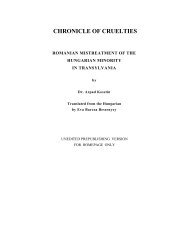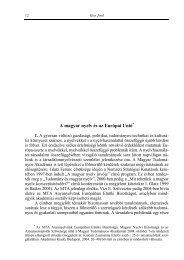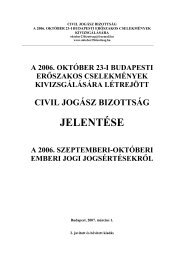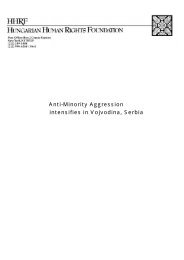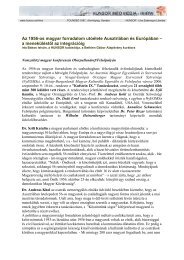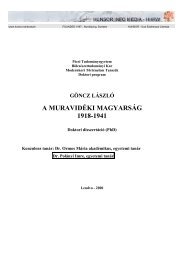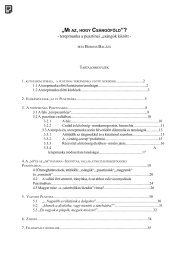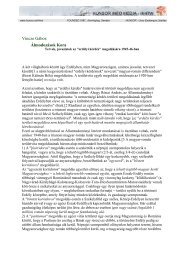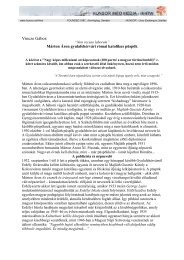PLEASE NOTE: This book contains graphic description ... - HUNSOR
PLEASE NOTE: This book contains graphic description ... - HUNSOR
PLEASE NOTE: This book contains graphic description ... - HUNSOR
Create successful ePaper yourself
Turn your PDF publications into a flip-book with our unique Google optimized e-Paper software.
The bloody day of collective punishment dawned on Horgos on November 20th. The captiveswere forced to go seven kilometers on the international highway. The sick parson was allegedlytied to a woman. The captives were made to dig their own graves by the road. The Priest wasgranted the favor of being allowed to watch the grave diggers' work, while he was disgracefullytied up. Then they were slaughtered by their guards.Legend has it that when Istvan Viragh collapsed, there appeared a bright cross above his figure,and he disappeared in its glow.<strong>This</strong> vision was spread by the peasants, who were brought there from the nearby farms to dragthe sixty corpses, some of whom they knew well, to the much too shallow grave and bury them.The corpses were covered by a thin layer of soil. Within a few days arms and legs appeared outof the shallow grave, where stray dogs began to dig up the already decomposing bodies. Thetaciturn inhabitants of the pit had to be moved to another mass grave. The mass grave wasfound in 1964, when the former sheepshed was turned into an inn. The mass grave was revealedduring the excavation for the drain pipe. The nature of the grave was proved by the fact thatthere was black cassock fabric among the rags that were unearthed, along with buckles, belts,and other92personal objects and bones.They say that the members of the firing squad were punished by God. they died hideous deaths.The leader of the squad hanged himself in the woods of Szelleveny following the murders. Someof the other murderers died of cancer or ulcerous diseases, and most of them committed suicide.MARTONOSThe Red Army occupied Martonos on October 8th. October 11, the local Serbs had organizedthemselves and worked up enough courage to ravage the Roman Catholic parsonage, ruin thearchives, and the library. They could not have had a reason for bearing grudge against theRoman Catholic Church except for simple religious aversion. They smashed most of thefurniture and broke the till open, and took 17,840 pengo cash. a third of the total expense of thechurch of Kispiac, that was being built. They also dragged the Rev. Mihaly Werner along with23 other villagers.On November 21, 1944, after more than a month of continuous torture, the priest and his fellowsufferers were loaded on a truck at night and taken to the trenches by the Tisza River, althoughthey had not done anything to qualify them for capital punishment. There had been no atrocitycommitted in the village against the Serbs in 1941. The majority of the arrested people wereperfectly innocent, altough some of them offended Serbs in 1941, but in no way to the extentthat would have called for death.Let us consider the case of Ferenc Hollo for an example. When the last German soldier had leftthe village, Hollo, standing in his yard, remarked to his wife, "They won't come back, will they?"<strong>This</strong> was overheard by his Serbian neighbor, who denounced him for waiting for the Germans tocome back. <strong>This</strong> is why he was arrested and executed.The tailor Karoly Jozsa was, at the instigation of a rival Serbian tailor named Congradas Dusko,charged with making a suit for the village notary, Matyas Feher, and was finally slaughtered forit. Policeman Janos Varkulya was executed because he had given warning to a Serb for illegally



